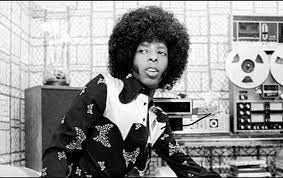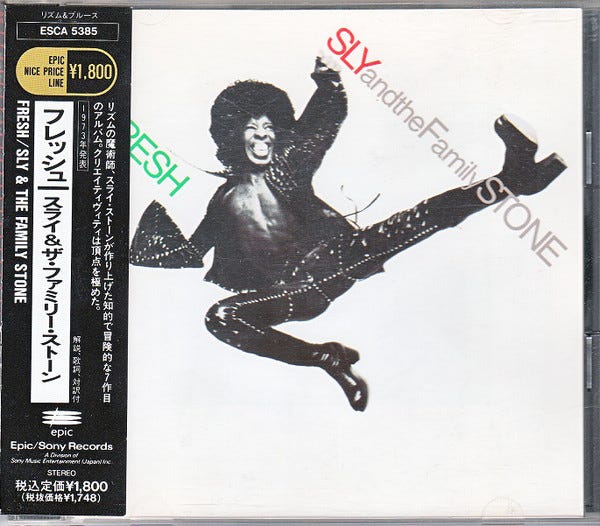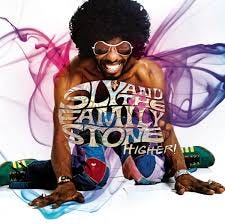"Fresh" and "Fresher."
Pondering the art of mixing through the lens of Sly Stone's last masterwork.
After the “official” release of his seventh album The Life of Pablo in 2016, Kanye West did something many artists dream about: He continued to tweak it.
Making good on his vow to build a “living, breathing, changing creative expression,” the hip-hop producer reworked some of the album’s accompaniment tracks and did wholesale remixes of others. His extended wrestling match took advantage of the endlessly updatable nature of digital files: With just a few keystrokes, he was able to change the album’s sequence on the Tidal streaming service (where the digital-only release debuted) and even added a new closing track, “Saint Pablo.” While each iteration brought some derision – the eye-rolling of media types as they chuckled about Kanye Being Kanye – it also resulted in additional coverage.
But it was more than a promotional stunt. West’s revisiting of the dense, sometimes chaotic Pablo tracks posed meaningful questions about art in the digital age: When, if ever, is it finished? If it’s never finished, how should an audience approach it – as a work in progress, a rough draft? Who decides which is the “optimal” version?
For guidance on these matters, West could have consulted Sly Stone, the composer, producer and bandleader whose exuberantly idealistic, unconventional music was revolutionary in the late 1960s and early ‘70s. For years now, at least since a comprehensive catalog program in 2007, the Sly faithful have been scrutinizing an “alternate” version of Stone’s last great work, 1973’s Fresh.
The story: After approving Fresh for release, Stone held onto the masters, and at some point returned to the studio to remix several of the tracks. Where the initially approved Fresh featured the band’s usual sonic array, with trademark staccato horn stabs and multi-part vocals at the forefront, the fresher Fresh pushed those elements further back to emphasize crisp, more minimal keyboard and guitar parts.
When Sony Music digitized the Sly and the Family Stone catalog for CD release, the approved master tapes were used for most regions of the world; somehow, though, in a delightful moment of human error, Japan and the Netherlands got the “alternate” Fresh mixes. One result: A frenzy among collectors. Another: Sony ended up appending several of the alternates to the 2007 Legacy edition of Fresh as well as a box set. Stone’s post-release revisions have been hiding in plain sight ever since; big thanks to record producer, DJ and music omnivore Aaron Luis Levenson for alerting me to the alternates years ago. And then helping me pick my jaw up off the floor after he played them.
The two versions of Fresh offer tremendous insight into the subtle art of post-production. They show how slight, sometimes granular changes in emphasis and positioning can alter the character of a recording. Only one track, the opener “In Time,” is exactly the same on both; the two versions of the closer, “Babies Making Babies,” are completely different performances, suggesting distinctly different emotional realms. On other tunes, there are slight differences in tempo and arrangement, with the alternates generally having a more immediate, visceral sound – particularly when it comes to Stone’s impulsive lead vocals, which are presented at intimate, up-close-and-personal range. Situated atop ever-so-slightly revisedchanged groove tapestries, those growls and inside-joke asides we know from the original come across with startling immediacy.
Lots of the musical “architecture” of Fresh is transformed: The horns that give “Let Me Have It All” its agitated syncopation reside far in the background on the revised mix. They’re replaced by a recurring chordal jab from electric piano that becomes the organizing focus of the track. Sure, absolutely, it’s a small change. But pay attention to it from one verse to the next, noticing the way it organizes and galvanizes the groove: With this single device (and other, equally understated ones), Stone opens a new window onto the tune. Creates an unexpectedly compelling platform. Forces listeners to consider it from a different angle – or, more accurately, angles.
Not saying one is superior to the other – as we know, it can be dangerous to mess with people’s memories. Still, the most casual of A/B comparisons between Fresh and its funhouse-mirror alternate offers a world of insight into Sly Stone as producer, record-maker, conceptualist. He’s not teaching fundamentals of mixing here — just using one alternate path, among gazillions available, to show how music can resonate differently as changes are made to the (ongoing, possibly endless) balancing and blending of sounds.
Why yes, we have a fancy digital suggestion box. Share your favorite Underloved/Overlooked records here: echolocatormusic@gmail.com.
Please consider subscribing (it’s free!). And…..please spread the word! (This only works via word of mouth!)








